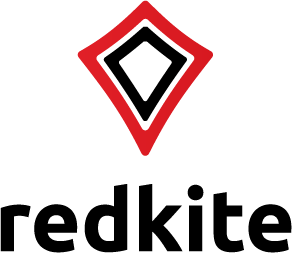Messaging as a discussion and communication user interface had shifted precisely how we interact with each other (when was the last time you called someone for immediate concern?). It is about to change exactly how individuals interact with your business.
The layout has removed because it is inherently easy to use, is convenient, is contextual, and is expressive. Most significantly, it sustains effortless customer care communications. All one has to do is try to find a brand name on a social network or messaging application and start communicating.
There are lots of conflicting meanings of messaging. Still, at Sparkcentral, we define messaging as text-based messages sent out from social media sites such as Twitter, Facebook, and Instagram, from messaging apps such as Messenger, WeChat, and even WhatsApp to those from smartphones such as SMS and in-app. Think of it as a discussion layout that can preserve every one of these tools.
Messaging Is Asynchronous
Think about exactly how you message your friends and family. You send out an iMessage, SMS, Facebook, or What’ sApp message, as well as set about your various other organization. When your friend responds, you obtain a notification on your house display or in the app. The very same relates to communicating with brands. 9 out of 10 people would undoubtedly choose to message an organization since doing so is convenient and does not disrupt their day. Typical support networks like phone, email, and conversation placed the burden of deal with the client to call or email and typically require them to wait to get help. With messaging, consumers get notified of your action and also can react as necessary.
Messaging Supplies a Threaded, Continual Conversation History
Unlike many customer support communications today, such as phone and live chat, which is based upon sessions, conversations can continue where they last left off. This means that consumers don’t have to repeat themselves whenever they reach out to a business. The study has found that customer care interactions that make the client repeat information, connect multiple times, and generally include headache variables to the process are four times more probable to drive consumer disloyalty. With messaging, both the customer and the brand name have a history of past communications, making follow-ups much more accessible and more comfortable, minimizing the initiative needed to deal with the issue on both sides.
Businesses that have adopted messaging as customer care channels accomplish 2.9 times better annual boost in NPS than “All Others” (12.3 percent versus 4.3 percent). Furthermore, the research study has found that worker involvement rates also increase as the format makes solution agents tasks less complicated.
Messaging Is Quick, Convenient, and the Preferred Form of Interaction
People lead progressively active lives, and being held hostage by the phone or live chat doesn’t aid in the issue. Some issues take some time to solve, as well as instead of needing to rest and wait while the associate troubleshoots, the consumer can tackle their service. Firms can message the consumer when there is news or require extra details, saving time and money on both sides. With email, you have no way of understanding if your issue is being taken care of, as well as the majority of real-time chat sessions expire if your attention is diverted to various other problems, forcing you to begin around again.
Messaging Is Contextual, Supporting All Kinds of Media
Messaging as an interaction interface is developed to support operational as well as transactional messages. Brands can send clients boarding passes, invoices, delivering notices, and much more utilizing messaging applications and a lot more within their own apps. Customers can react directly to those messages and get assisted without searching for a contact number and again repeat themselves to one more representative.
Many businesses leverage structured messages (think flight delay notices, shipping confirmations, etc.) and chatbots over messaging apps such as Messenger to supply clients with essential details in one hassle-free area.
Messaging Is Expressive
GIFs, emoji, pictures, and video clips can all be leveraged in messages making it an entirely extra meaningful tool than a phone, email, or chat. Several critics of digital maintenance argue that text-based styles remove the human aspect from exchanges. Yet, messaging has been developed to allow people to share emotions and express themselves in new methods.
Emoji, specifically, have gone into the mainstream with brand names and individuals utilizing them to reveal wit, happiness, and even temper. Similarly, GIFs can be shared to express mockery and satire in a manner that is commonly doing not have on phone-based client support.
The Moment to Start Is Now
To get going, I recommend that you begin by developing your procedure and also workflows to support digital care on the most frequently made use of social networks. Again, today’s messaging applications (Facebook, Twitter, Messenger, WeChat) and afterward moving from there in the direction of possessed (in-app, web) messaging channels. A current report funded by Sparkcentral found that 41 percent of organizations checked currently use messaging as part of their network mix for customer care discussions. Also, 15 percent of brand names take on a messaging platform for customer service soon.[/vc_column_text][/vc_column][/vc_row]


